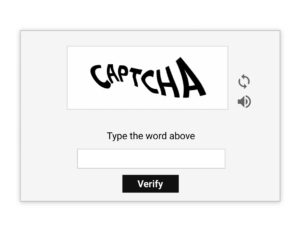GS3 – S&T – AI

CAPTCHA systems are increasingly being integrated into AI-based cybersecurity mechanisms to counter evolving online threats.
What is CAPTCHA?
CAPTCHA stands for Completely Automated Public Turing test to tell Computers and Humans Apart.
Primary Function:
Its main objective is to differentiate human users from automated bots, preventing bots from abusing digital platforms.
Background:
CAPTCHA emerged in the early 2000s to tackle the growing problem of spam, data theft, and fake user registrations caused by malicious automated programs.
- The first CAPTCHA patent was submitted in 2003.
Evolution of CAPTCHA Technology
- Initial CAPTCHA (2000s): Featured puzzles involving distorted letters and numbers that users had to interpret.
- Image Recognition-Based CAPTCHA: Required users to identify specific objects in a set of images (e.g., vehicles, traffic lights, store fronts).
- reCAPTCHA: Advanced form used digitized scanned words from books, simultaneously helping in literary digitization.
- Invisible reCAPTCHA: Evaluates user behavior, such as mouse movement and interaction patterns, to detect bots without explicit challenges.
- Further Innovations: Newer forms like audio CAPTCHA were developed to combat increasingly intelligent AI bots.
How CAPTCHA Distinguishes Between Bots and Humans
- Puzzle-Oriented Tasks: Often involve recognizing distorted visuals or selecting correct image tiles.
- Turing Test Foundation: Based on Alan Turing’s concept, which suggests that a true AI must mimic human behavior well enough to be indistinguishable.
- Human Edge: While these challenges are straightforward for people, they are computationally complex for bots to solve.
Theoretical Basis
- The Turing Machine is a conceptual computing model that introduced the framework for algorithmic computation.
- The Turing Test assesses a machine’s intelligence by checking whether its responses can convincingly imitate human communication.




